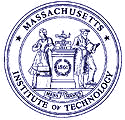LNS/NIG
Nuclear Interaction Group
in the Laboratory for Nuclear Science at Massachusetts Institute of Technology
The research focus of the Nuclear Interaction
Group at MIT, LNS is to understand the fundamental nature of nuclear
interactions and the dynamical structure of nucleons and nuclei.
The  physics information is obtained by experiments in which
high-energy
beams of electrons or photons interact with target made of protons,
few-body nuclear systems, or more complex nuclei. The scattered
electrons and other particles ejected from the reaction are detected
and the probabilities for such process to happen (cross sections) are
extracted. In many experiments, spin polarizations of the beam, target
and/or the ejected particles are used to extract unique
information. Because the electrons and photons are point-like
particles with no known internal structure or excited states, and
because their electro-magnetic interaction with the target is
relatively weak and well understood (as opposed to the strong interaction among the
constituents of the target itself), they penetrate
deeply into the target nucleon or nuclei without disturbing its
substructure, thus enabling the extraction of the internal structure of
the nuclear or nucleon target with a relatively easy interpretation.
physics information is obtained by experiments in which
high-energy
beams of electrons or photons interact with target made of protons,
few-body nuclear systems, or more complex nuclei. The scattered
electrons and other particles ejected from the reaction are detected
and the probabilities for such process to happen (cross sections) are
extracted. In many experiments, spin polarizations of the beam, target
and/or the ejected particles are used to extract unique
information. Because the electrons and photons are point-like
particles with no known internal structure or excited states, and
because their electro-magnetic interaction with the target is
relatively weak and well understood (as opposed to the strong interaction among the
constituents of the target itself), they penetrate
deeply into the target nucleon or nuclei without disturbing its
substructure, thus enabling the extraction of the internal structure of
the nuclear or nucleon target with a relatively easy interpretation.
The Nuclear Interaction Group is also engaged
in study of the electro-weak Standard Model. In particular, one can
extract the weak coupling of quarks by measuring parity violation cross
section difference of deep inelastic electron scattering on a isoscaler
target.
To achieve the highest quality of the
measurements, continuous-wave (CW) electron accelerators with energies
of a few GeV are esential. Our group, therefore, performs its
experiments at facilites at the leading edge of the field, including MIT/Bates
(Middleton, MA), the Thomas Jefferson National Accelerator
Facility (JLab) (Newport News, VA), and MAMI (Mainz,
Germany). You may choose "
Previous Research
",
"Research Highlights"
and "Future
Projects" to learn more
about our completed, ongoing, as well as future research programs at these facilities.
We are supported by the U.S. Department of
Energy, Office of Science, Office of Nuclear Physics.

